Chapters >> 1 - 3 | 4 - 6 | 7 - 10 | 11 - 13 | 14 - 16 | 17 - 19 | Giglist
Marcus Österdahl knew Carl-Eric Hjelm from the Electra label, a Swedish company who distributed Decca, RCA and Philips nationally, and played him the tape. Charmed by the music, Hjelm told the band to record him an album, preferring to await the results before signing them officially. Eventually, Decca would sign Kaipa and issue their debut album.
The recording session was completed in nine days between 4 and 26 July 1975 at Marcus Music Studios in Stockholm, with Marcus himself acting as engineer. The group selected eleven favourites from around twenty compositions. Only the recent, more sophisticated and symphonic songs were retained, as they were considered to be more representative of the group's development. Lack of space unfortunately led to three tracks being omitted from the final track listing. Ingemar, Roine and Tomas didn't want to include the song "Skogspromenad" on the album, because they thought it was too simple and not representative of the band. Marcus considered this to be one of their best songs, and in the end it was included on the album. This proved to be good, as live and on radio this one was going to be the band's most requested song for a long time. Hans used a large array of keyboards, playing Hammond organ, Fender Rhodes electric piano, synthesizer, string ensemble and harpsichord as well as singing lead. The band produced the album themselves and without much studio experience. They were sometimes unable to reproduce perfectly their own characteristic sound, particularly in the more experimental sequences that sounded inferior to stage renditions.
Nevertheless, Kaipa's originality comes well to the fore on the album and on the whole the group was satisfied with the final result. A painting by Roine, depicting "an astral traveller floating freely above temples in the jungle", was chosen as the sleeve artwork for the eponymous album.
Kaipa performed subsequently at different open-air festivals in the summer of 1975 and embarked on a short tour in the autumn which included more radio broadcasts.
The album was released in December 1975 to an enthusiastic public and critical response. Sales quickly reached 5,000 units, eventually reaching 10,000, a definite success for a self-produced prog rock album, especially as distribution was limited to Scandinavia. Kaipa struck a chord with a great number of Swedish rock fans by their favouring musical exploration and melodic charm, not to mention their coupling the splendour of traditional religious and folk themes with the power of rock. Kaipa's success was built on the finesse of the band's music, and enhanced by poetry celebrating the power of love and the beauty of nature. This contrasted strongly with the political preoccupations inherent in the lyrics of most Swedish bands of Kaipa's generation.
Throughout their first album, Kaipa could certainly stake a claim as one of the leading Scandinavian progressive acts. The music is graceful and sophisticated, boasting arrangements and instrumental developments of great refinement. An album which, one could say with certainly, would equal the best productions of the "Anglo-Saxon" progressive school, but with its own unquestionably original touch in the successful use of Swedish folk material.
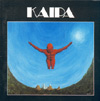

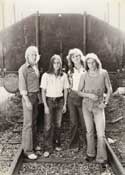
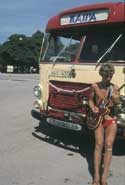
The musicians managed their business, investing most of the money in things like a new tour bus and more equipment. They resumed daily rehearsals, which enabled them to progress musically and enhance group cohesion. Writing new arrangements of existing numbers was as important as composing new pieces; none of the band members considered himself a virtuoso and thus Kaipa had to concentrate on playing a very carefully ´prepared´ music with elaborate orchestrations.
There were discussions about the variations and the details of the rhythm section when rehearsing a couple of new songs. This almost provoked Roine's departure, and in fact, the band's constant perfectionism nearly occasioned a split more than once!
Another discussion dealt with authorship. In Sweden at this time there were lots of absurd and at the same time naïvely romantic ideas floating around, based upon the vision that everybody can create and play music, and no one is better than his brother or sister. (Sometimes there were some peculiar situations during concerts when somebody from the audience, who really believed in these visions, suddenly stood on stage with the band, thinking he could bring the music to a higher level.) Some forces within the band were in some way affected by these thoughts of collectivity and maintained that the Kaipa songs should be considered as a collective creation, and that everybody in the band were equal authors and composers. These thoughts were in some cases definitely correct but only concerning parts of the arrangements. The basic structure of the song, the melodies, the chords and the words were at this time always composed by one single member.
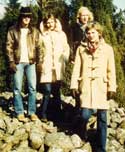

The band decided to record all the compositions they'd laid down since the release of their debut album. These were all Lundin/Stolt compositions except one, which Roine and Ingemar had co-written. The music had evolved more than ever towards complex arrangements; improvements were also visible in each musician's personal contribution to the completed themes.
The album's opener, "Skenet Bedrar", almost 20 minutes long, couldn't be performed properly as a whole and so was recorded in several sections that were later reassembled in its final form. "Korståg", an audience favourite in concerts, was also a number with a complicated structure, so much so that the Swedish Institute of Musicology would later use it as an example of sophisticated rock composition.
For the recording, Hans augmented his existing array of keyboards (Hammond organ, Yamaha synthesizer, string ensemble, grand piano and Hohner Clavinett) with a mellotron, a Korg synthesizer, and a mallet instrument. Apart from his Rickenbacker, Tomas used an old Fender Jazz bass and a synthesizer bass. Roine played his old Gibson guitar and Ingemar used his new Tama drum kit for the first time.
For the introduction to "Skenet Bedrar", the band used some synthesizer ´pink noise´ processed through a stereo flanger with the addition of some Asian bells; this was recorded while Leif was turning the pitch knob on the 24-track tape recorder. Hans' overdubbed sequence-like arpeggios on his Yamaha synthesizer and Roine's guitar were treated through a phaser; these effects produced the cosmic sounds heard at the beginning of the album.
Hans sang the first part of the theme, followed by Ingemar in the central section; Tomas spoke the bass parts in the finale, "Vilseledd" (Lead Astray). The mellotron is highlighted in "Korståg" and gives the song its imposing feel with a fusion of string and choir sounds. The instrument also crops up on "Skenet Bedrar" and "Inget nytt under solen" (Nothing New under the Sun). The instrumental part of "Ömsom sken" (Alternately Radiance) was composed by Roine. The lead vocal and central part of the composition were courtesy of Ingemar and Roine, whereas Ingemar composed the Chinese-sounding sequences at the end of the track.
The band decided the track order and chose the sleeve, a NASA photo depicting astronauts in a moon buggy. The group selected this photo from several provided by Electra. Roine and Hans wanted to use a painting by Roine similar to the one on the first album. This would have been a logical continuation. But the other members reneged, and the group finally chose this photo, which had no connection to the title. The band's logo was changed, the original lacking originality. It was redesigned in a more personal style by Roine but was slightly distorted at the layout stage.
Among the people named in the credits is one Eugen Petrén, cited by the band for his ´moral and spiritual support`. In fact Petren didn't exist, even though a ´photograph` of him appears in the inner sleeve! The credit was meant as a joke, a skit on rock stars dedicating their records to so-called spiritual masters such as the Maharishi. With similar satirical intent, this photo in fact shows Ingemar ´communing with the universe`!
The album title refers to a remark made by Electra's president Carl-Erik Hjelm who during a meeting with the band inquired "Inget nytt under solen?" which translates as "Nothing new under the sun?". The band decided to use this saying as a title for their second album as it provided an ironic comment on their musical evolution. This they saw as a continuing line from composers like J.S.BACH through rock groups like YES, i.e. an elaborate symphonic music aiming at the expression of emotions and feelings in an aesthetic of formal beauty and melodic perfection. Kaipa, however, intended to differentiate themselves from past and present styles, producing a personal and original music taking its inspiration from the past yet looking to the future.
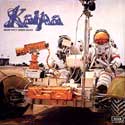

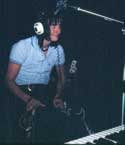

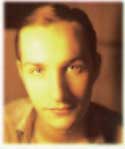
Chapters >> 1 - 3 | 4 - 6 | 7 - 10 | 11 - 13 | 14 - 16 | 17 - 19 | Giglist